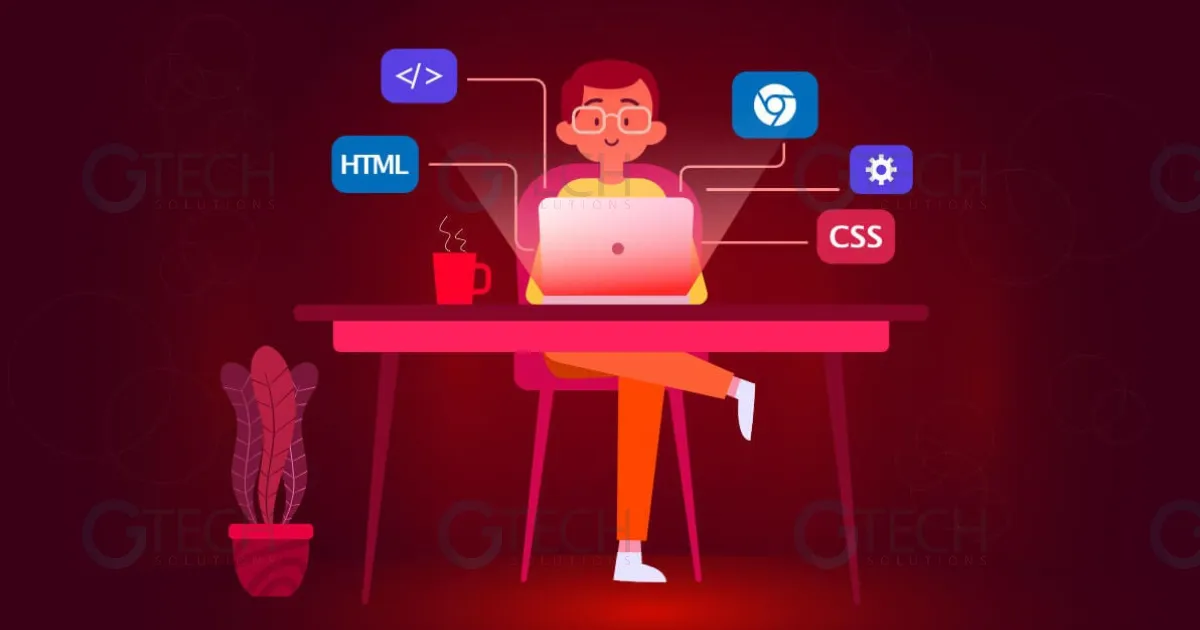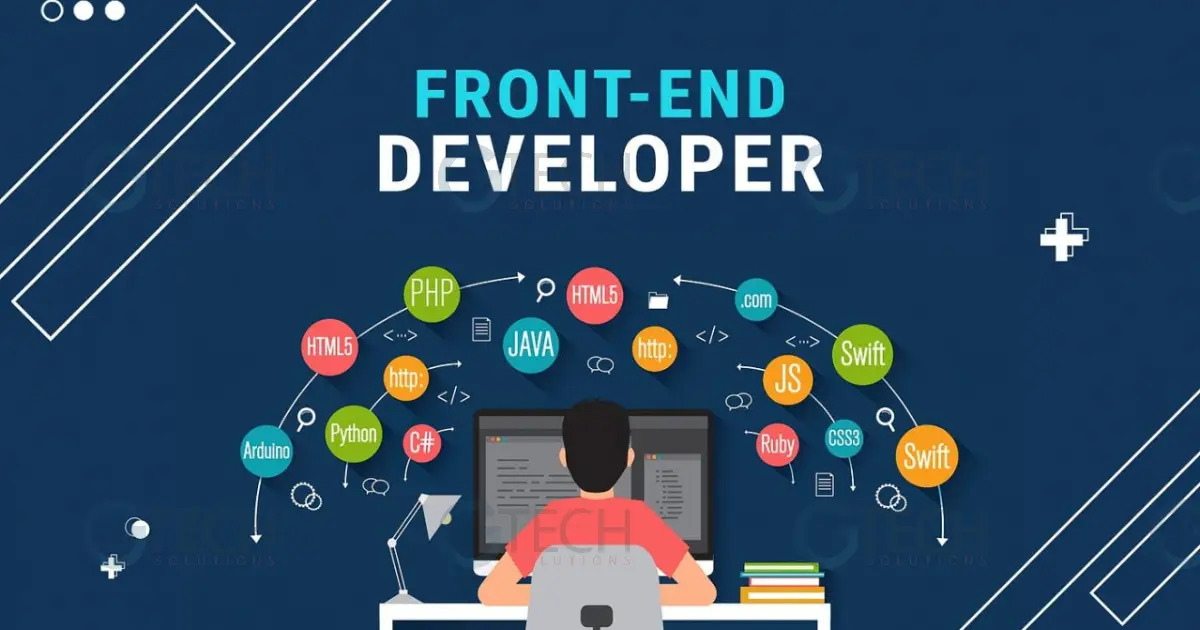Complete Frontend Developer Roadmap for 2025
The world of web development is constantly evolving, and front-end development is at the heart of this transformation. In 2025, a front-end developer will need to master various skills, tools, and technologies to stay ahead in the competitive job market. Suppose you’re looking to begin or enhance your career as a front-end developer. In that case, this roadmap will guide you through the essential phases and technologies you need to understand, from mastering the basics to diving into advanced topics.
Phase 1: The Fundamentals of Frontend Development
To become a successful front-end developer, you need to start by mastering the foundational technologies that power the web: HTML, CSS, and JavaScript.
- HTML (Hypertext Markup Language): HTML is the backbone of any webpage. It’s the standard markup language used to create web pages. Frontend developers should be proficient in HTML5 to structure the content of web pages effectively.
- CSS (Cascading Style Sheets): CSS is used to control the layout and design of web pages. In 2025, understanding CSS Flexbox and Grid for building responsive layouts will be essential. Developers must also get comfortable with CSS preprocessors like Sass and Less to streamline and organise their stylesheets.
- JavaScript: JavaScript is the programming language that makes web pages interactive. Learning JavaScript fundamentals, such as variables, loops, functions, and events, is crucial. You should also understand how to manipulate the Document Object Model (DOM) to update content dynamically on the webpage.
By mastering these three core technologies, you’ll have a solid foundation for your front-end development journey.
Phase 2: Responsive Design and User Interface Development
In 2025, responsive design is non-negotiable. Frontend developers must ensure that web applications work across a variety of devices and screen sizes. Responsive design ensures that websites are optimised for both desktop and mobile devices.
- CSS Media Queries: To create responsive designs, frontend developers use media queries to apply different styles depending on the device’s characteristics, such as screen width and resolution.
- Frameworks and Libraries: CSS frameworks like Bootstrap or Tailwind CSS help speed up the development process. These tools provide pre-built styles and components that make creating responsive layouts much easier.
- User Interface (UI) Development: Developing a great user interface is essential to improving the user experience (UX). A good UI is intuitive, visually appealing, and easy to use. Frontend developers should have a strong grasp of design concepts and know how to implement UI elements effectively.
Mastering responsive design and UI development will set you apart in the competitive field of front-end development.

Phase 3: Advanced JavaScript Concepts and Frameworks
JavaScript is not just about basic functions anymore. In 2025, front-end developers will need to know more advanced concepts, libraries, and frameworks to build modern web applications.
- JavaScript ES6+ Features: Modern JavaScript (ES6 and beyond) introduces features like arrow functions, classes, template literals, and destructuring, which improve code readability and functionality. Learning these features is essential to becoming a proficient JavaScript developer.
- React: React has become the most popular JavaScript library for building user interfaces. React allows developers to build single-page applications (SPAs) efficiently by updating the UI without reloading the page. Understanding React hooks, state management, and component architecture will be essential.
- Vue.js and Angular: While React is dominant, other frameworks like Vue.js and Angular are also important to learn. Understanding the concepts and structure of these frameworks will make you more versatile and valuable in the job market.
- State Management: With the growing complexity of web applications, managing state effectively is crucial. Tools like Redux (for React) or Vuex (for Vue) help developers manage the application state, ensuring smooth and efficient data flow across components.
Phase 4: Version Control and Web Development Workflow
A successful front-end developer should be familiar with the tools and systems that streamline the development process. Version control systems like Git are essential for tracking changes, collaborating with teams, and maintaining code history.
- Git and GitHub: Version control tools help developers manage code changes and collaborate with others. Learning Git and using platforms like GitHub or GitLab will help you organise your development process and improve team collaboration.
- Build Tools and Task Runners: Tools like Webpack, Grunt, and Gulp allow developers to automate tasks like minifying files, compiling Sass to CSS, and bundling JavaScript modules. Familiarising yourself with these tools will improve your development process and efficiency.
- Development Environment Setup: Understanding how to set up your development environment with the right tools, such as code editors (e.g., VS Code) and local servers, will help you work more efficiently.
Phase 5: Performance Optimization and Web Accessibility
In 2025, performance optimisation and web accessibility are critical components of front-end development. Websites need to load quickly and be usable by people with disabilities.
- Performance Optimization: A fast website is a must-have for a great user experience. Developers need to understand how to optimise assets (like images and scripts), implement lazy loading, and reduce HTTP requests to improve web performance.
- Web Accessibility: Websites should be accessible to everyone, including people with disabilities. Familiarising yourself with accessibility standards, such as the Web Content Accessibility Guidelines (WCAG), will help you create inclusive user experiences.
- SEO (Search Engine Optimization): Search engines rely on structured and accessible websites to rank pages. Understanding SEO basics and how to optimise HTML elements (like headings, alt tags, and metadata) will help improve your website’s search engine rankings.

Phase 6: Advanced Topics and Continuous Learning
As you advance in your career, you’ll need to stay updated with the latest trends and technologies in front-end development. Here are some advanced topics to explore:
- Server-Side Rendering (SSR): Modern web applications are built using frameworks like React, Vue, or Angular, but understanding how to render content on the server side can improve the performance and SEO of your web applications.
- WebAssembly: WebAssembly is a powerful technology that allows you to run code written in multiple programming languages in the browser. It can significantly improve performance, especially for complex tasks.
- Progressive Web Apps (PWAs): PWAs combine the best of web and mobile apps. Learning how to develop PWAs will open up new opportunities for you to build fast, reliable, and installable apps for users across devices.
- Continuous Learning: Frontend development is always evolving. Keeping up with the latest frameworks, libraries, and tools is crucial for staying competitive. Engage with the developer community, attend meetups, and follow trends to stay on top of the industry.
Conclusion
The frontend developer roadmap for 2025 is a journey that involves mastering core technologies, staying updated with new tools, and continuously improving your skills. By following this roadmap, you will be prepared to build modern web applications and thrive in the ever-changing world of front-end development.
At G-Tech Solutions, we specialise in providing top-notch web application development services globally. Whether you need help building a responsive, user-friendly website or a complex web application, our team of experienced developers is ready to turn your ideas into reality. Contact us today to take your web development project to the next level!



